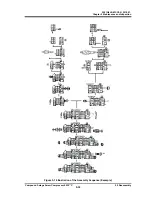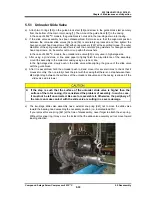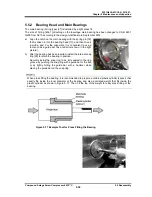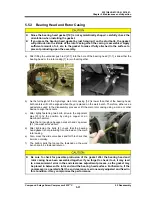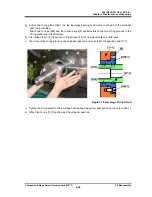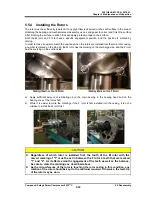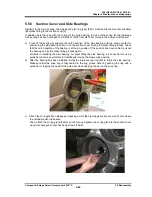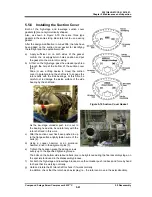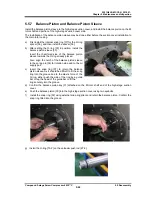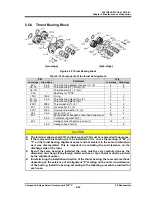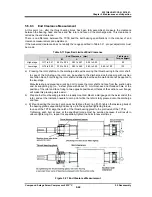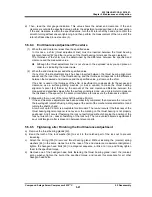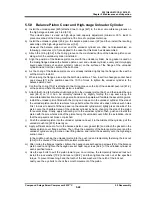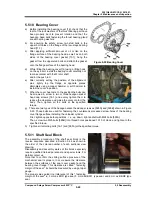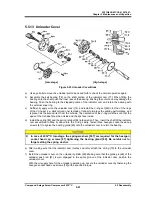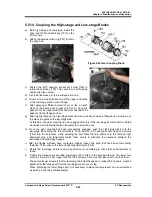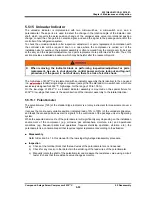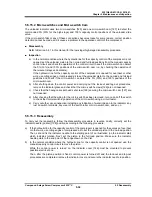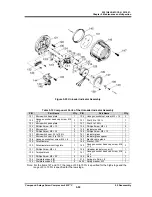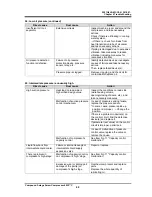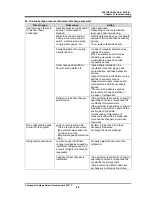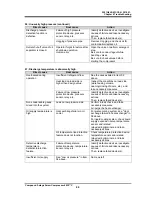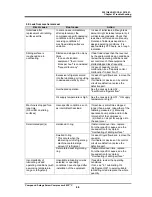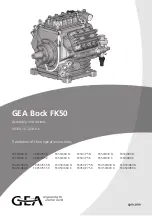
2201Q4JE-MY-C9-N_2018.01.
Chapter 5 Maintenance and Inspection
Compound 2-stage Screw Compressor
4032**C
5.5 Reassembly
5-47
d) Then, read the dial gauge indication. This value shows the actual end clearance. If the end
clearance is outside the specified value, perform the adjustment work described in the next section.
If the end clearance is within the specified value, turn the M rotor shaft by hand and confirm the
smooth turning without uneven tightening. And then perform the measurement of the run-out of the
rotor shaft described in next section (3).
5.5.8.4 End Clearance Adjustment Procedure
(1) When the end clearance is less than the specified value
In this case, a shim (thrust adjustment liner) must be inserted between the thrust bearing
alignment spacer [42] and the inner race of the thrust bearing to increase the end clearance.
The thickness of the shim must be determined by the difference between the specified end
clearance and the measured value.
◆
Although the thrust adjustment liner is not shown in the exploded view, you can place an
order to us indicating the model name.
(2) When the end clearance exceeds the specified value
If any shim (thrust adjustment liner) has been inserted between the thrust bearing alignment
spacer and the inner race of the thrust bearing, and the thickness corresponds to the difference
between the measured end clearance and the specified value, just remove the shim.
If no shim is used or the thickness of the shim is insufficient to compensate for the excess end
clearance, use a surface-grinding machine (or ask a vendor) to make the thrust bearing
alignment spacer [42] thinner by the amount of the end clearance difference between the
measured and specified values. After the surface grinding is done, use a micrometer to measure
the thickness of the spacer for the entire circumference to make sure the thickness is uniform.
(3) Measuring the run-out of the rotor shaft (low-stage M rotor)
If the end clearance adjustment has been successfully completed, then measure the run-out of
the low-stage M rotor shaft using a dial gauge at the point of the mechanical seal attachment and
turning the shaft by hand.
A run-out of up to 0.03 mm is acceptable for all models. The run-out occurs if the thickness of the
thrust bearing alignment spacer is not even or the marking on the thrust bearing is not properly
positioned. And it occurs if fastening the lock nut performed without changing the position of the
lock nut wrench (i.e., uneven fastening of the lock nut). The run-out also becomes significant if
any small foreign matter is present in between relevant parts.
5.5.8.5 Tightening after Finishing the End Clearance Adjustment
a) Remove the thrust bearing glands [43].
b) Bend the tooth of the lock washer [40] to set it in the notched part of the lock nut to prevent
loosening.
c)
Attach the O-ring [150] to removed thrust bearing gland. Without inserting the (conical) spring
washers [46] in the same manner as in the case of the end clearance measurement/alignment,
tighten the hexagon head bolts [45] in a diagonal sequence, a little at a time, and finally tighten
them to the specified torque.
d) Remove one of the hexagon head bolts fastening the thrust bearing gland, insert the (conical)
spring washer, tighten the bolt at the specified torque, and repeat this procedure for all other
hexagon head bolts.


